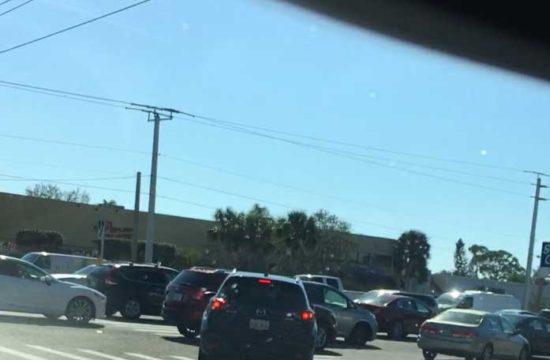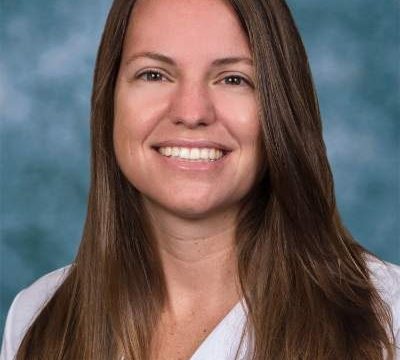The Science Behind Florida’s Sinkhole Epidemic
Reports of these ground-chasms have been swelling in the past few years. Geology helps explain why.
/https://public-media.smithsonianmag.com/filer/1e/f9/1ef91709-a3fb-43f8-bc02-07cfea34a574/ca77w9.jpg)
The Smithsonian: There are many good reasons why The Villages is known as “Disney for Seniors.”
The largest retirement community in the world, The Villages is also one of America’s safest and most leisurely places to live. Sumter County, populated almost entirely by Villagers, is 62nd among 67 counties in Florida for violent crime—likely because the median age is 66.6, the oldest of any U.S. county. The ubiquity of gates, guard booths and mandatory visitor I.D. cards lends to the low crime. Vehicular deaths are very low, which makes sense given that Villagers commute in golf carts more than cars. The Villages is also located in the safest area of Florida for hurricanes.
But Villagers are increasingly fearful of a growing, surreal threat: the ground suddenly opening up and swallowing them whole.
“Everybody is worried,” a 10-year resident of the Village of Calumet Grove told me this March, pointing to a saucer-sized hole at his curb where sinkhole specialists drilled to check for weak spots. A month earlier, in mid-February, seven sinkholes opened across the street and into a golf course, forming a zig-zag crack across the facade of one house and causing four homes to evacuate. One is now condemned. A town hall that week attracted five times more Villagers than usual. “It’s not a good time to sell,” the elderly neighbor says, with a weary laugh. (He asked me not to use his name.)
In contrast to its otherwise serene status, The Villages is a hotbed of sinkholes. They occur more frequently in Florida than any other state, though this week we’ve seen them appear on Maryland roads and even in front of the White House. And The Villages is smack in the middle of Sinkhole Alley—a swath of counties in Central Florida that carry the greatest risk. (A German bakery near The Villages even sells a popular pastry called the Sinkhole.)
Typically sinkholes are no more than a headache for property owners, but when tragedy does strike, it’s the stuff of nightmares. Among the six recorded deaths from sinkholes in Florida history is Jeffrey Bush, who was sleeping in his bedroom when a sinkhole sucked him 20 feet underground. His body was never recovered.
The number of reported sinkholes in The Villages has spiked in recent years. An official with The Villages Public Safety Department told the Orlando Sentinel that residents had reported “several” sinkholes in 2016, though none affecting homes—an assessment matched by the archives of Villages-News. Ditto for 2015; in 2014 three sinkholes affected six homes.
In 2017, by stark contrast, at least 32 sinkholes were reported by that independent news site. At least eight homes were affected, plus a country club, a busy intersection, a Lowe’s home improvement store, and the local American Legion post, the largest in the world. (The Daily Sun, a large newspaper owned by The Villages’ developer, reported on none of them except the one at the busy intersection, only to say the hole was “later determined not likely” a sinkhole.) In just the first three months of 2018, at least 11 sinkholes were reported by Villages-News, affecting eight homes—all before sinkhole season even started, in early spring. Four more sinkholes sprang up this week.
That there’s such a thing as “sinkhole season,” just as there’s a “tornado season” and “hurricane season,” speaks to the many factors that contribute to the threat. Underlying all of them is the fact that Florida is built on a bedrock of carbonate, primarily limestone. That rock dissolves relatively easily in rainwater, which becomes acidic as it seeps through the soil. The resulting terrain, called “karst,” is honeycombed with cavities. When a cavity becomes too big to support its ceiling, it suddenly gives way, collapsing the clay and sand above to leave a cavernous hole at the surface.
The main trigger for sinkholes is water—too much of it, or too little. The normally moist soil of Florida has a stabilizing effect on karst. But during a drought, cavities that were supported by groundwater empty out and become unstable. During a heavy rainstorm, the weight of pooled water can strain the soil, and the sudden influx of groundwater can wash out cavities. Central Florida was in a severe drought at the beginning of 2017, followed by the intense rainfall of Hurricane Irma that hit The Villages in September—and a deluge after a drought is the optimal condition for a sinkhole outbreak.
But those major events from Mother Nature in 2017 don’t account for the spate of sinkholes this year already. The weather in Sumter County has been pretty typical. So what’s going on?
Man-made development, it turns out, is the most persistent factor for increased sinkholes. Earth-moving equipment scrapes away protective layers of soil; parking lots and paved roads divert rainwater to new infiltration points; the weight of new buildings presses down on weak spots; buried infrastructure can lead to leaking pipes; and, perhaps most of all, the pumping of groundwater disrupts the delicate water table that keeps the karst stable. “Our preliminary research indicates that the risk of sinkholes is 11 times greater in developed areas than undeveloped ones,” says George Veni, the executive director of the National Cave and Karst Research Institute who conducted a field study in Sinkhole Alley.
And The Villages has been in development overdrive. It was the fastest growing metropolitan area in the US. four years in a row (2013-16), and it’s still in the top 10. In his 2008 book Leisureville, journalist Andrew Blechman reported that The Villages would “finish its build-out—an industry term for the point when a project is complete—in the very near future,” peaking at “110,000 residents.” Yet a decade later, the population has sped past 125,000. Last year The Villages reported a 93 percent boom in housing construction and a new purchase of land that will yield up to 20,000 homes. Another land deal for 8,000 new homes is nearing completion.
Those new homes will bring more golf courses, and The Villages already has 49 of them (#2 per capita among all U.S. counties). The retention ponds built on those courses can leak into the karst and trigger sinkholes. Irrigating those 49 courses and the tens of thousands of lawns in The Villages is also a significant risk factor. In his 2016 book Oh, Florida, veteran reporter Craig Pittman reveals how his friend who worked at the Daily Sun said the staff was never to write two things: 1) anything complimentary of Barack Obama, and 2) “The numerous sinkholes that open up because of all the water being pumped from the aquifer to keep lawns and golf courses green.”
In a scathing column, Orlando Sentinel’s Lauren Ritchie notes how the fledgling community in 1991 had a water permit to use 65 millions gallons a year, but by 2017 that rate reached “a stunning 12.4 billion gallons a year.” The local aquifer in Sumter County is also threatened by a controversial plan by a bottling company to pump nearly a half-million gallons of water a day—and double that rate during peak months. Despite the protests of Villagers worried that a falling water table will spur sinkholes, pumping will begin soon.
Read more: https://www.smithsonianmag.com/science-nature/science-behind-floridas-sinkhole-epidemic-180969158/#1TMZeceiGqDHCQeK.99
Give the gift of Smithsonian magazine for only $12! http://bit.ly/1cGUiGv
Follow us: @SmithsonianMag on Twitter
Read more: https://www.smithsonianmag.com/science-nature/science-behind-floridas-sinkhole-epidemic-180969158/#1TMZeceiGqDHCQeK.99
Give the gift of Smithsonian magazine for only $12! http://bit.ly/1cGUiGv
Follow us: @SmithsonianMag on Twitter
Read more: https://www.smithsonianmag.com/science-nature/science-behind-floridas-sinkhole-epidemic-180969158/#1TMZeceiGqDHCQeK.99
Give the gift of Smithsonian magazine for only $12! http://bit.ly/1cGUiGv
Follow us: @SmithsonianMag on Twitter
Read more: https://www.smithsonianmag.com/science-nature/science-behind-floridas-sinkhole-epidemic-180969158/#1TMZeceiGqDHCQeK.99
Give the gift of Smithsonian magazine for only $12! http://bit.ly/1cGUiGv
Follow us: @SmithsonianMag on Twitter












